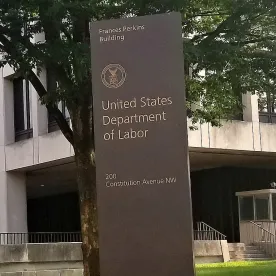Kavanaugh and the Congressional Schedule. Earlier today, by a vote of 51-49, the U.S. Senate ended debate on the nomination of Judge Brett Kavanaugh to the Supreme Court of the United States. The vote was on party lines, though Sen. Joseph Manchin III (D-WV) voted “yes” while Sen. Lisa Ann Murkowski (R-AK) voted “no.” This sets up a final floor vote in the Senate late in the afternoon tomorrow. After that, Congress’s focus will be on the midterm elections. Indeed, it is unlikely that the Senate will address any major legislation between the Kavanaugh vote and the November 6 election, though there are still many unconfirmed nominees to various posts, and it is always possible that the Senate could move some of those before leaving town (the Senate’s last legislative day in D.C. is currently scheduled for October 26, but it could recess at any time). The U.S. House of Representatives is in recess until after the November 6 elections.
Supreme Court’s 2018–2019 Term. Speaking of the Supreme Court, it kicked of its 2018–2019 term this past Monday, October 1, 2018. With Justice Anthony Kennedy no longer on the bench, the Court has a new seating arrangement. The new term also marks Justice Ruth Bader Ginsburg’s 25th year on the Court. The term began with an employment case, Mount Lemmon Fire District v. Guido, on whether state and local government employers with fewer than 20 employees are subject to the Age Discrimination in Employment Act of 1967 (ADEA). Further, on October 3, the Court heard arguments in New Prime Inc. v. Oliveira, on whether the Federal Arbitration Act’s (FAA) exception for “contracts of employment of seamen, railroad employees, or any other class of workers engaged in foreign or interstate commerce” excludes independent contractors from coverage under the FAA.
Caesars Entertainment Corporation Comments Due. Comments are due today, October 5, 2018, in the National Labor Relations Board’s (NLRB) Caesars Entertainment Corporation case concerning employee use of employer-owned email systems. In 2014, the NLRB ruled in Purple Communications, Inc. that employees must be permitted to use employers’ email systems for union organizing purposes. In Caesars Entertainment Corporation, the Board is soliciting feedback from the regulated community as to whether it should adhere to, modify, or overrule Purple Communications. Mark G. Kisicki has the details.
Lawmakers to DOL: Joint-Employer Solution Needed. While legislation to codify a “direct and immediate” joint-employer standard has stalled in the Senate, legislators are turning to the regulatory arena to seek some relief. On October 1, 2018, 83 House members sent a bipartisan letter urging Secretary of Labor Alexander Acosta to “develop rulemaking to clarify the current standard for determining Joint Employer Status under the Fair Labor Standards Act (FLSA).” Twenty-six Republican senators (including Majority Leader Mitch McConnell (R-KY) and Majority Whip John Cornyn (R-TX)) also sent Acosta the same letter. With the administration’s fall regulatory agenda set to appear sometime in the coming weeks, the Buzz will be curious to see if such a rulemaking effort will be a Department of Labor (DOL) priority.
Business Group Opposes Pearce Renom. The Buzz has previously reported on the administration’s surprise move to renominate Mark G. Pearce for a third term on the NLRB. Given the dramatic policy changes at the Board during Pearce’s tenure (e.g., joint employer, ambush elections, fractured bargaining units, etc.), this move has rankled the business community. Consequently, earlier this week, the Coalition for a Democratic Workplace sent a letter signed by more than 50 business groups urging U.S. senators to reject Pearce.
You Keep Using That Word. I Do Not Think It Means What You Think It Means. Back in June, the Buzz discussed how a report issued by the U.S. Bureau of Labor Statistics (BLS) purporting to measure the workforce participation of workers with alternative employment arrangements fell short because it failed to measure “individuals who found short tasks or jobs through a mobile app or website and were paid through the same app or website.” Well, late last week, the BLS updated this report with new survey data on workers who engage in “electronically mediated employment,” which BLS defines as “short jobs or tasks that workers find through websites or mobile apps that both connect them with customers and arrange payment for the tasks.” Unfortunately, according to BLS, “the new questions on electronically mediated employment did not work as intended and had a large number of incorrect ‘yes’ answers.” So who incorrectly responded “yes” when asked if, as part of their job, they use a mobile app or website to connect with customers and facilitate payments? A police officer, surgeon, a manager at a fast food restaurant, and a railroad engineer, to name a few. After recoding the data, the BLS determined that “In May 2017, there were 1.6 million electronically mediated workers, accounting for 1.0 percent of total employment.” Given the problems with the survey, the Buzz isn’t sure what to make of this, but we’ll keep our eyes open for other attempts to capture the scope and impact of the sharing economy.
Supreme Court Justice: A Nice Entry-Level Position. Part of the Sturm und Drang surrounding the nomination of Judge Brett Kavanaugh to the Supreme Court of the United States is the fact that it is a lifetime appointment to the bench. While it is true that most justices haven’t actually died while on the bench, the lifetime appointment often means that justices are expected to spend quite a number of years on the Court. However, lengthy tenures on the Court aren’t always the case. In fact, this past Wednesday, October 3, 2018, marked the 76th anniversary of Associate Justice James F. Byrnes’s resignation from the Supreme Court after serving only 15 months on it—the shortest tenure of any justice in the modern era. Byrnes was also the last justice to serve on the Court without going to law school.
So why only 15 months? Byrnes was a Democratic politician from South Carolina who became friends with President Franklin D. Roosevelt while serving in both the U.S. House of Representatives and the U.S. Senate. Roosevelt nominated Byrnes to the Supreme Court in 1941, but in October of 1942, he asked Byrnes to resign to lead the Office of Economic Stabilization and later the Office of War Mobilization (important positions, no doubt, during World War II). In 1945, President Harry S. Truman appointed Byrnes to be secretary of state, a position that he held for two years. Finally, Byrnes subsequently served as governor of South Carolina from 1951 to 1955. Quite a career.




 />i
/>i

